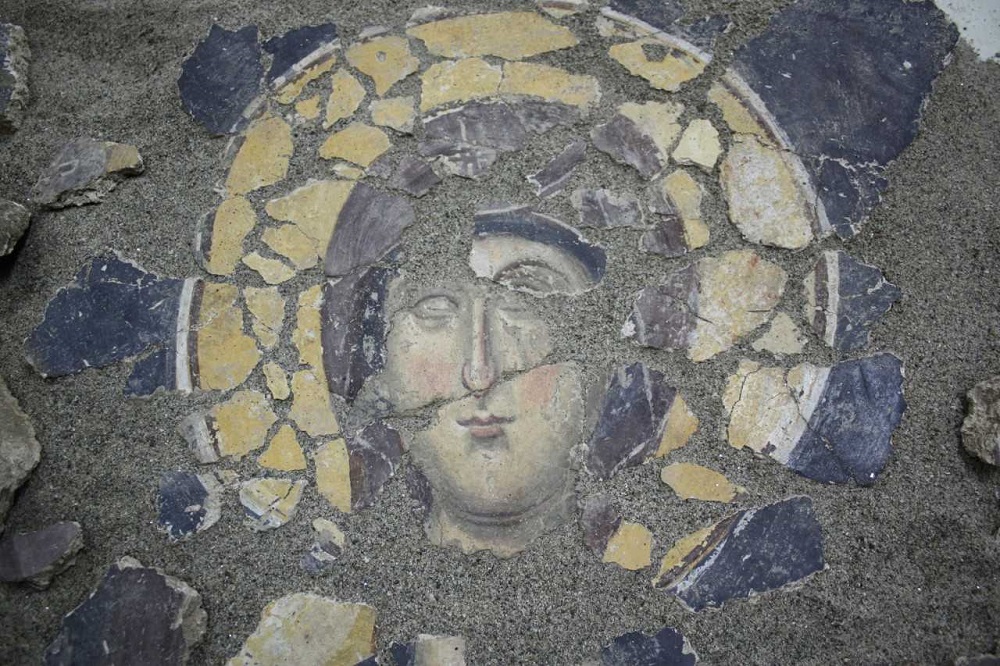
The Acropolis of Thessaloniki from its very ancient foundation was the strongest and outermost foundation of the city. A few meters north of the gate of the exit from the Acropolis, in the vicinity of the nodal point where the intermediate wall of the city meets the western part of the Acropolis wall and near the mighty towers with imperial inscriptions, in a rescue excavation of a plot of land at 5 Stergios Polydorou Street, a temple of the Palaeologan period, unknown to research, with a dense cemetery of the same period, was discovered.
Specifically, half of the approximately multi-sided, estimated as five-sided, niche of the Chancel with two construction phases was revealed. The wall of the niche is built with stones and bricks, many of which are sealed with crosses, has a negligent brick and mortar construction system and the binding material is earth. A very short distance from the painted wall of the niche, the altar itself was revealed. The altar is built in the form of a solid cube.
From the construction characteristics of the superstructure of the niche of the Chancel, its iconographic decoration and its movable equipment, the excavation revealed valuable elements. Between the wall of the niche and the Holy Table, a chalice vessel was uncovered which was the inauguration of the second construction phase.Many fragments of luxurious frescoes from the sanctuary area were found in the destruction layer of the niche. From these fragments, it was possible to partially reconstruct the image of the Virgin Platytera, which undoubtedly adorned the upper fresco zone of the niche.
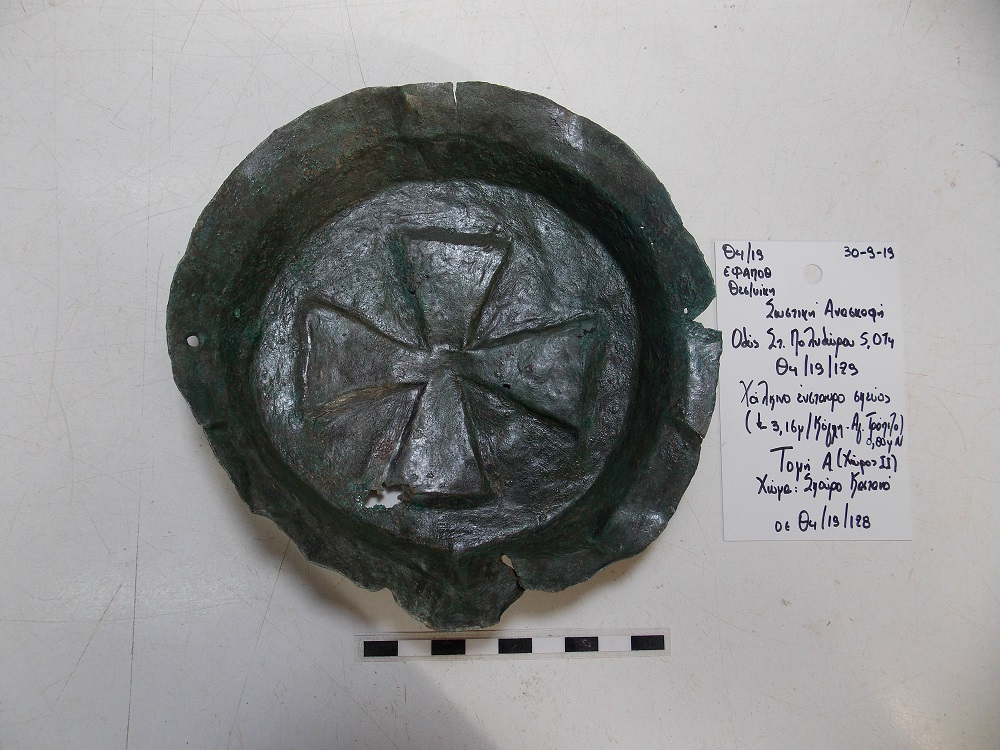
Fifty-seven (57) burials in successive layers were investigated at the excavation site.Of particular interest are two burials of particularly large men, whose height approaches two metres, and the burial of an pregnant woman, where in place of the pelvis were found bones and a fetal skull in the position of childbirth.
Based on the overall excavation picture and the numismatic evidence from closed sets of burials and the building that included Latin imitations and coinages of Michael VIII Palaiologos (1261-1281), it can be stated that the cemetery and the church with a polygonal niche were founded after the middle of the 13th century.
The dating of the church places it in the turbulent period of the history of Thessaloniki immediately after the Latin conquest. The period is characterized by the dynastic disputes, the zealot movement with violence that unfolded within its walls, the living and crowning of kings in the city itself until its final submission and subjugation to the Ottomans.
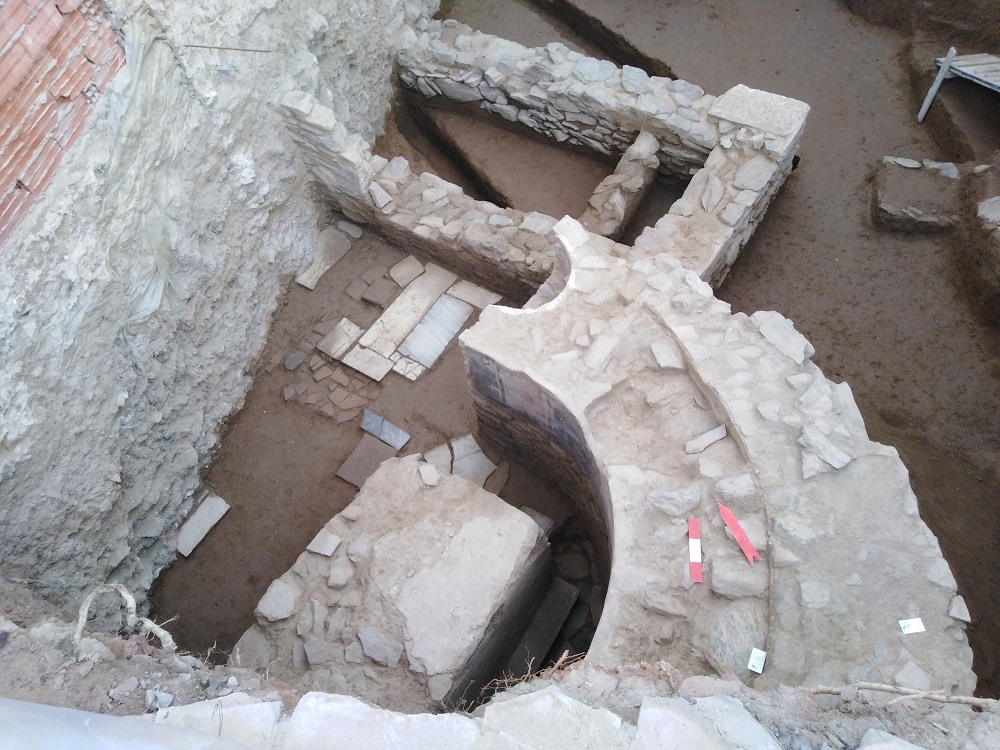

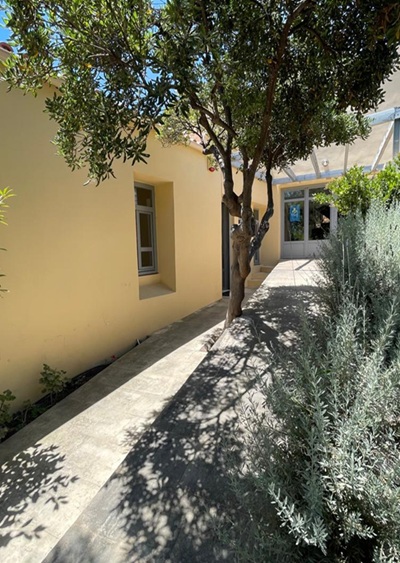

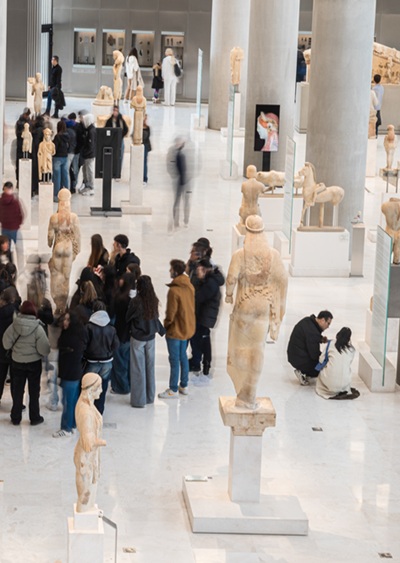



Leave A Comment